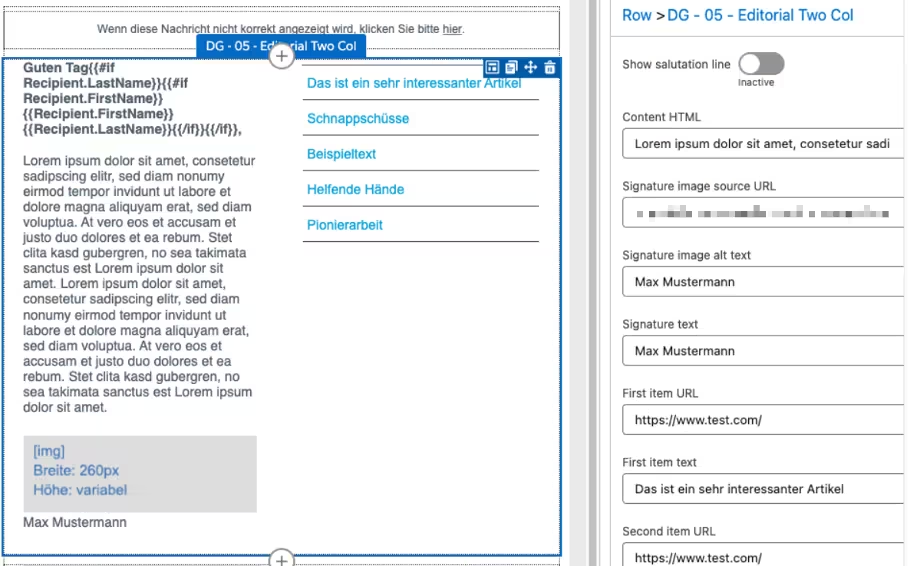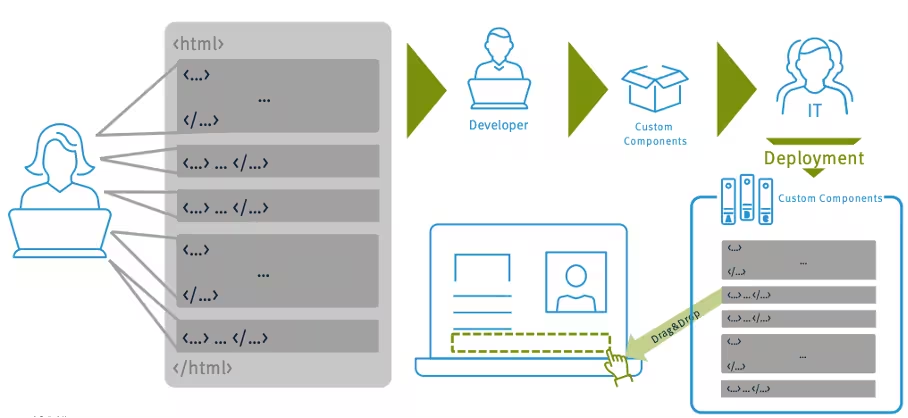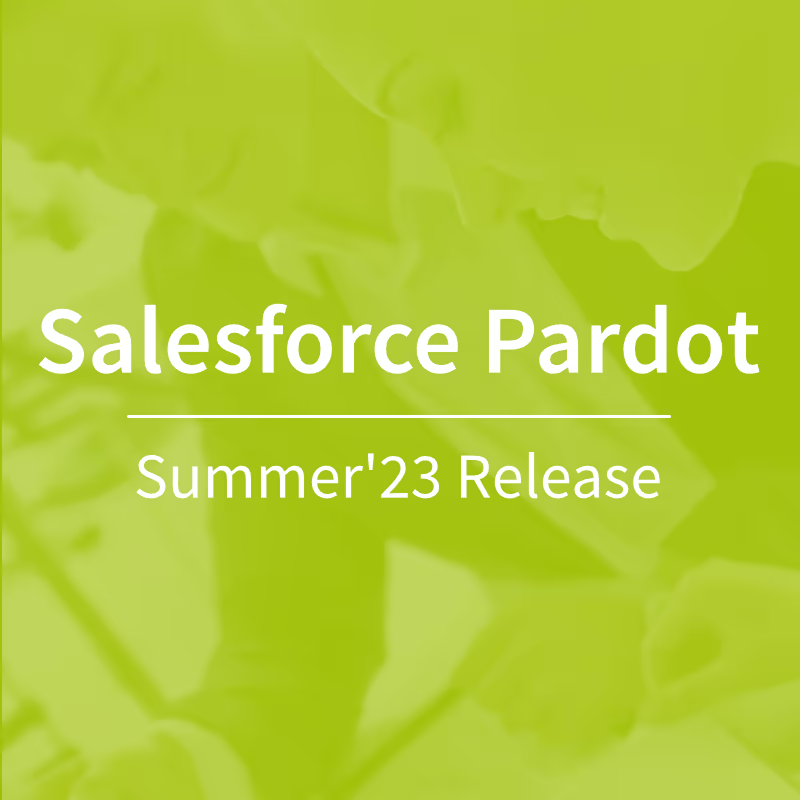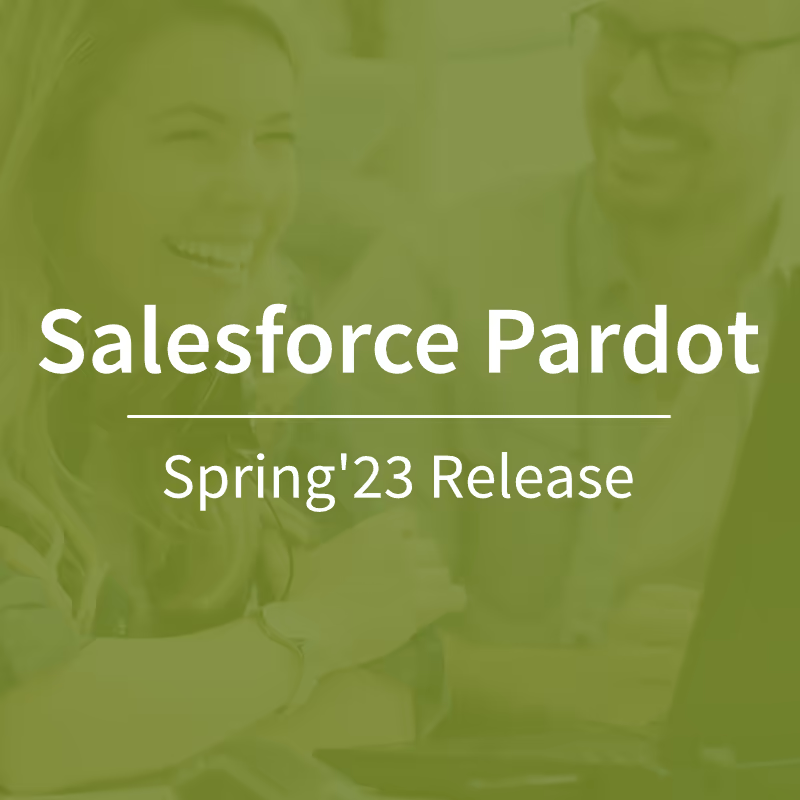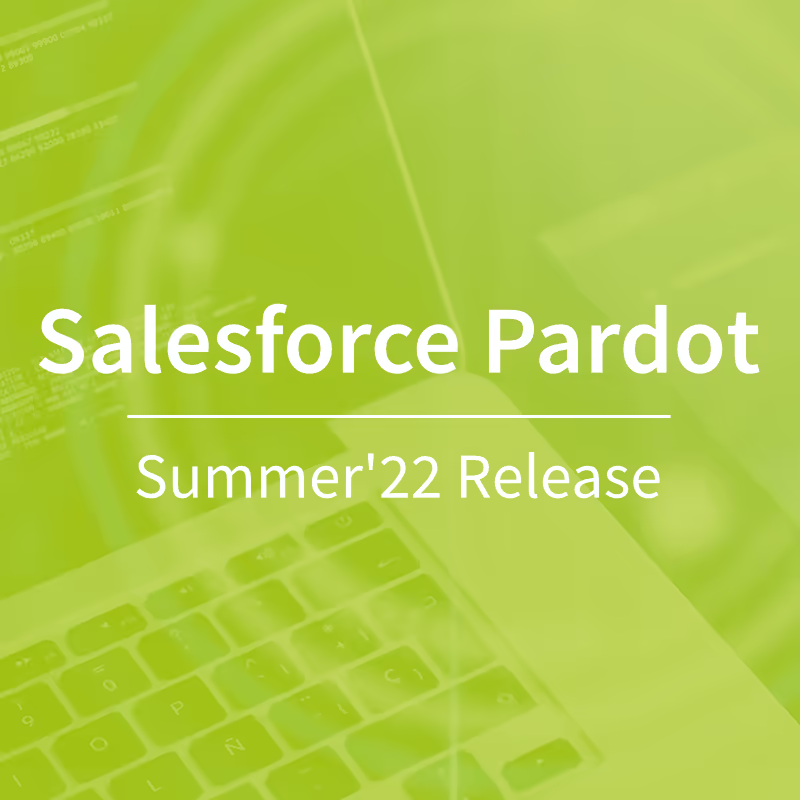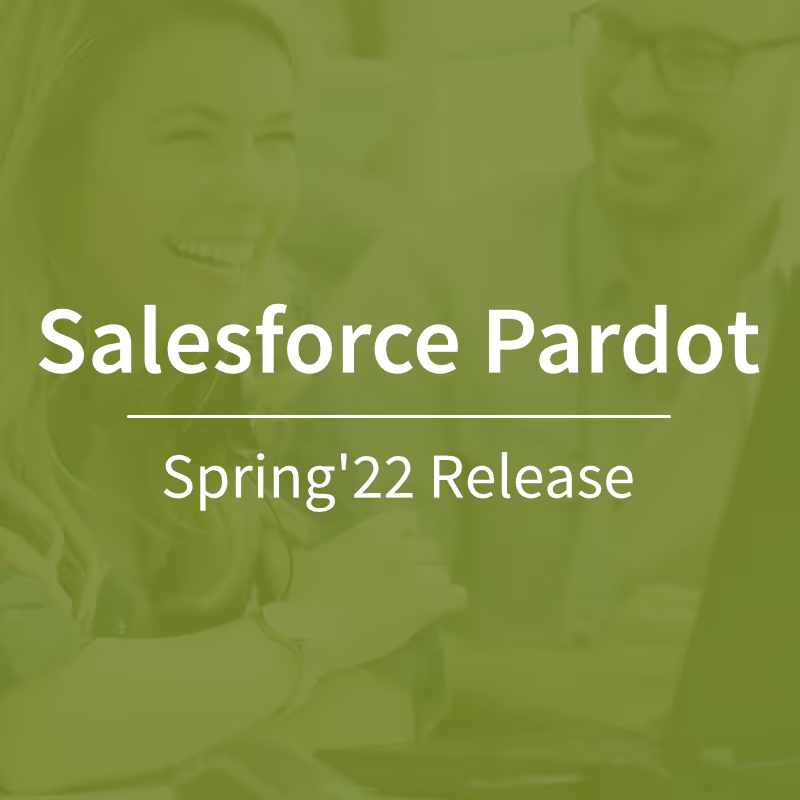The Editor Tragedy in Marketing Cloud Account Engagement
B2B marketing automation solutions can do a lot and are getting better and better — the included email editors and template systems, meanwhile, often remain surprisingly limited. Salesforce Pardot (or “Marketing Cloud Account Engagement” — hereafter MCAE) provides a prime example here. In this post, we'll show what the old editor's problem is, why the new editor doesn't solve the problem (not even in the latest third version), and what marketing managers can do until Salesforce really helps.
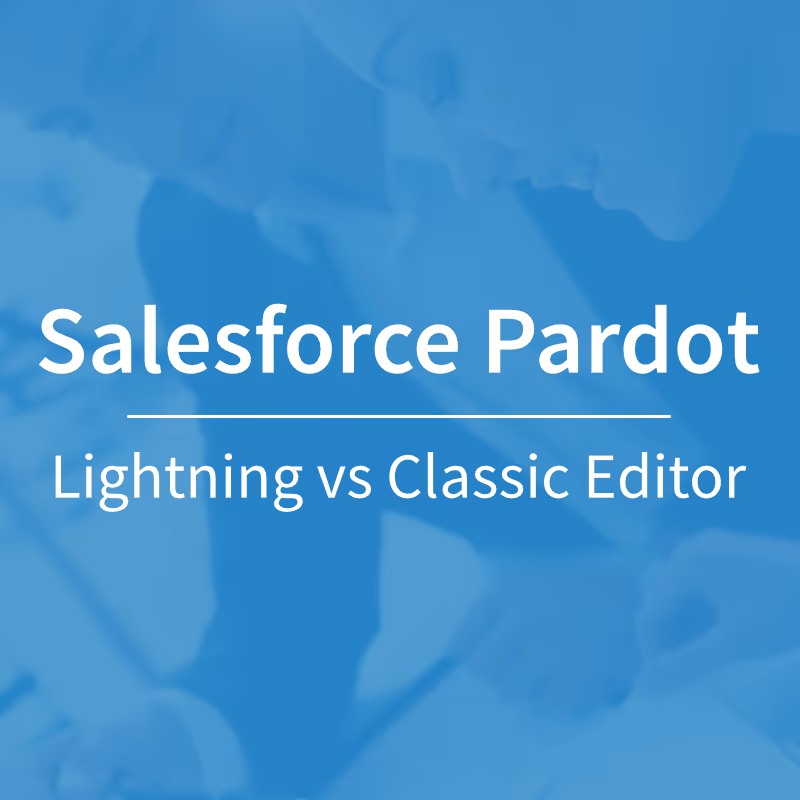
Classic Editor — too old for this world
“Classic” is often used as a euphemism for “old.” And that is exactly what the Classic Editor is: Like a well-maintained classic car, it does what it should, but is no longer up to date in terms of comfort and functionality. With more than ten years under its belt, usability is severely limited: For example, there is no library with ready-made elements (e.g. for “banner image,” “divider,” “two-splitter”) — instead, as a workaround, you have to build an HTML-based email template that contains all potentially required elements.
Although these “wallpaper templates” work, they are cumbersome to handle. Especially if you have many sections, editing until the desired arrangement is achieved takes quite a long time and all unnecessary elements must be deleted at the end. But this becomes a problem if you want to use one of these elements again, because there is no useful “undo” function. That means: You start all over again. In order not to make time-consuming mistakes, users must therefore be extremely careful.
The Classic Editor is still available in MCAE/Pardot. Salesforce has decided to let the new Lightning Editor exist in parallel with the old one. However, the two are not compatible, meaning that emails can only be created and edited with one version.
Lightning Editor — Ride the Lightning?
The Metallica album “Ride the Lightning” from 1984 isn't called that because you're lightning fast when you're riding on lightning. The title refers to the electric chair. The “Lightning” editor isn't quite as dramatic, but here, too, people think of lightning strikes rather than phenomenal speeds: The new editor is here to solve the difficulties of the “classic car” described above and criticized by users for years. The result is unfortunately disappointing. Although there is (finally) real drag and drop with ready-made elements, but only with quasi-“ naked”, unstyled standard components.
Of course, you can edit these components and define spacing, fonts, colors, etc. — but only after you have dragged them into an empty editor window and thus made them part of a specific email campaign. You cannot save it as an item in the component library. In terms of workflow, this brings you back to the Classic Editor and the “wallpaper templates” that the Lightning Editor was supposed to replace. And despite the improved undo function, going back involves deleting all newly created content.
But what about the new “custom components” that were introduced with the Lightning Editor — don't they offer exactly what we sorely missed before? Unfortunately no, because although they offer the option of using pre-styled elements, they are extremely limited when it comes to editing the content: Instead of a rich text editor as with the unstyled standard elements provided by Salesforce, there are only single-line editing masks here. This frustrates even experienced users after just a short time. For example, text formatting or inline links are not provided and can only be done via coding.
In addition, the testing and deployment process for custom components is very complex. As a first step, the HTML for the components must be written by someone with e-mail HTML knowledge. In the next step, a Salesforce developer must develop the custom components on this basis before IT — on behalf of the respective Salesforce admins — finally deploys the components in the Salesforce org. And this process must be repeated for every change that is later made to existing components.
We realize that the new editor does not solve the old one's problems. And unfortunately, the New Editor comes with a few new restrictions:
- Not full HTML access: In the Classic Editor, the HTML code of an email can be completely customized. Complete freestyle emails are therefore technically possible there. In the Lightning world, this is only possible at the level of individual elements, so that display problems in email clients, for example, can no longer be resolved by ourselves (which we want to guarantee to our customers).
- No flexible width: Lightning sets the width of an email to 600 pixels. While this is the most widely used standard, the trend is towards more flexible widths and breakpoints for responsive presentation, depending on the recipient group.
- No styling protection: Pre-made elements can be well protected in Classic so that users do not accidentally change font size, color, etc. This is also possible in Lightning, but the protection can be circumvented much more easily (even by mistake).
- No integrated inbox preview testing via Litmus: In contrast to “Classic”, this function is also no longer available.
- No dynamic content: Recipient-specific, characteristic-based elements (such as region, user data, etc.) are not integrated into the interface and can only be integrated via detours.
Conclusion: At best, the Pardot/McAE Lightning Editor offers a bit more convenience when compiling very large emails thanks to the drag-and-drop functionality. Otherwise, it is no improvement over the old editor and also has some restrictions that are completely unnecessary in our opinion. To try again the image of the classic car: With the old car, you can at least repair everything yourself; with the new model, you can't even change a light bulb anymore.
The Lightning “New Mail Experience”: Is New Always Better?
Salesforce itself has apparently recognized that the Lightning Editor still has room for improvement. That is why there is now a third option that is offered in parallel: Instead of “current”, “new mail experience” can now also be selected. Does this version provide the ability to neatly define and save content elements? Unfortunately not!
New Mail Experience only comes with standard components for inserting and editing. Usability and interface were slightly improved and visually optimized. Nothing significant has changed in the editor's functionality. Unfortunately, in the very latest version, we also find massive problems with the display of emails (in the editor itself, but also in the inbox). Overall, the editor still has numerous bugs, so that the New Mail Experience cannot be used stably. Even though some of them have now been fixed, our email developers say: “It's a mystery to us what this version should make better.”
One, two, or three: What should marketers do now?
Anyone using Marketing Cloud Account Engagement (Pardot) must use one of the editors — or bring in an external editor. Our advice at this point: Stay away from the Lightning Editor. Only those who have to create very large emails with a lot of moving steps will save some time. Because in the Classic Editor, you have to move each individual element up or down step by step and click by click; Lightning's drag-and-drop functionality is an advantage here. Otherwise, it should have become sufficiently clear why we have not become fans of the Lightning Editor (regardless of whether “current” or “new” experience) — especially since a change involves a great deal of initial effort, as all templates must be completely recreated and workflows must be redefined.
There is another alternative for the Classic Editor: Since complete HTML emails can be used, it is possible to create them with an external editor and then import them. We have tested which editors are suitable for this and how well. If you would like to know the advantages and disadvantages of the tested editors, especially when working with Pardot, we would be happy to advise you!
The good news: Salesforce can do it better—help!
While Salesforce Pardot has been struggling with its email editor for years, the in-house Salesforce Marketing Cloud colleagues have integrated an excellent and highly flexible email editor.
What we expect from a modern editor and what shortcomings need to be eliminated, we have as “Idea Post” in the Salesforce Community published — and hope for lots of support from the community! So: Vote for our suggestion so that our enjoyment of Salesforce MCAE/Pardot is no longer clouded by the editor!


